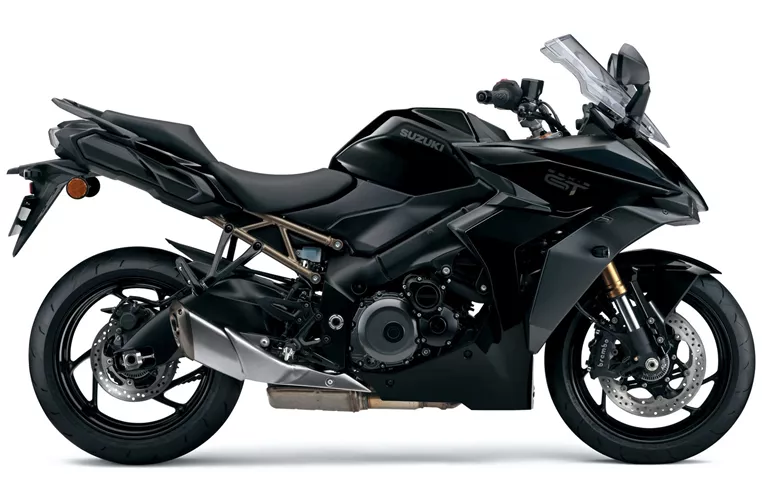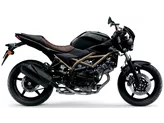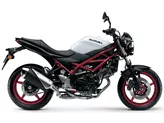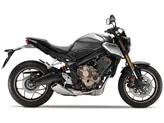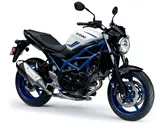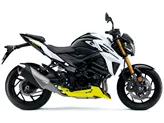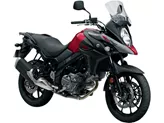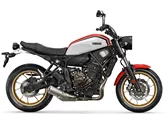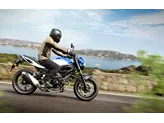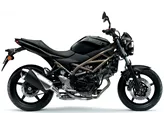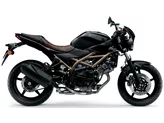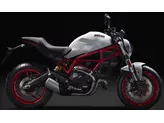Suzuki GSX-S1000GT 2022 vs. Suzuki SV 650 2017

Suzuki GSX-S1000GT 2022

Suzuki SV 650 2017
Overview - Suzuki GSX-S1000GT 2022 vs Suzuki SV 650 2017
The Suzuki GSX-S1000GT 2022 and the Suzuki SV 650 2017 are both motorcycles from Suzuki, but they cater to different riding styles and preferences.
Starting with the Suzuki GSX-S1000GT 2022, it is a sport touring motorcycle that offers a powerful engine and a range of advanced rider assistance systems. The engine is an in-line 4-cylinder with a displacement of 999cc, producing an impressive 152 horsepower and 106 Nm of torque. This engine delivers a lot of power and torque from the middle, providing a thrilling riding experience. The transmission is a chain drive, which is known for its efficiency and durability.
The chassis of the GSX-S1000GT is made of aluminum and features a twin-tube frame design. This provides stability and agility, making it suitable for both touring and sporty riding. The suspension consists of an upside-down telescopic fork at the front and a swing arm with a monoshock at the rear. This setup ensures a comfortable and controlled ride, even on uneven surfaces.
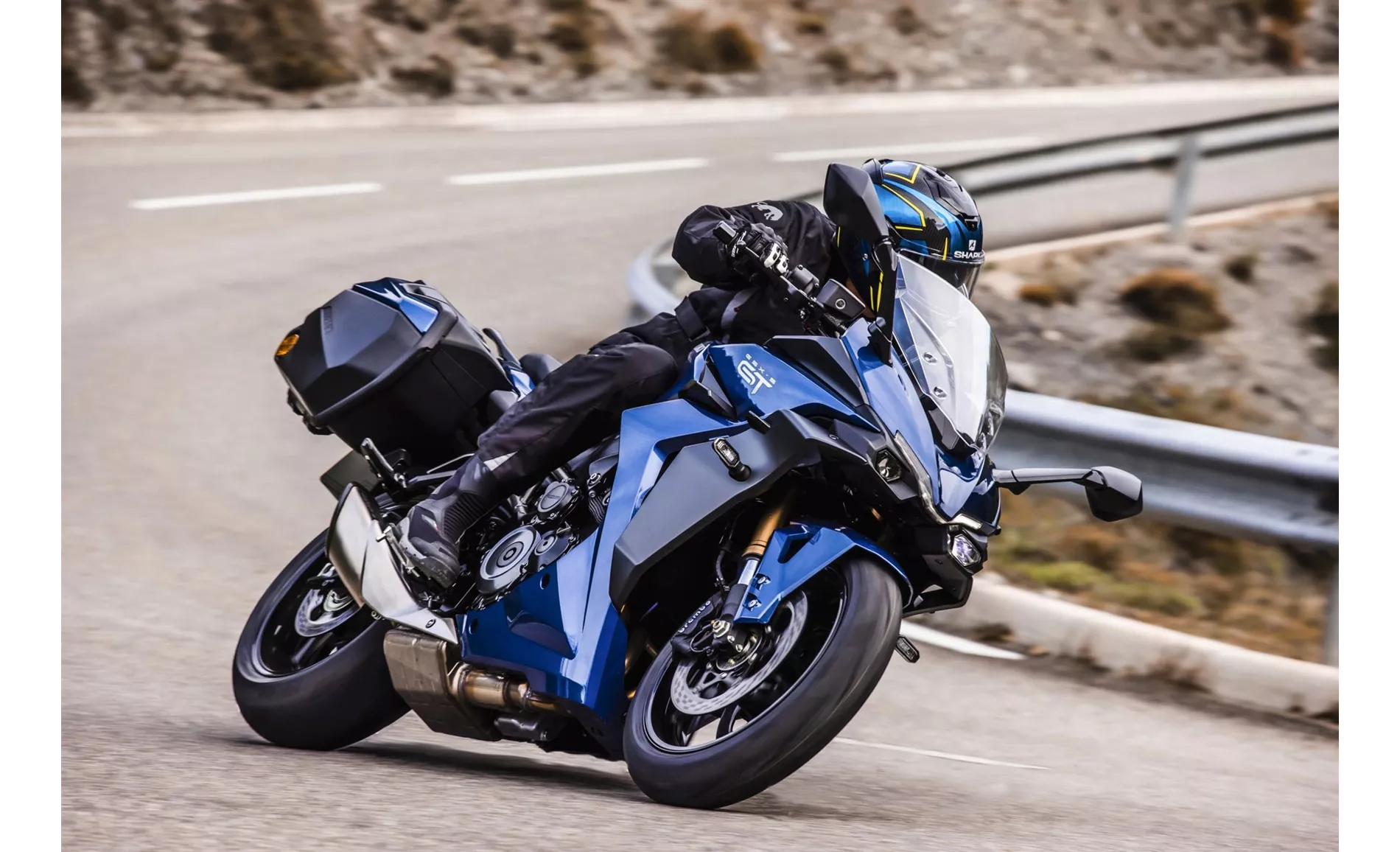
Suzuki GSX-S1000GT 2022
In terms of braking, the GSX-S1000GT is equipped with double disc brakes at the front, measuring 310mm in diameter and featuring four pistons. This provides excellent stopping power and control. The bike also comes with advanced rider assistance systems, including ABS, riding modes, ride by wire, a shift assistant with blipper, cruise control, and traction control. These systems enhance safety and improve the overall riding experience.
Moving on to the Suzuki SV 650 2017, it is a naked bike that offers a smooth engine and playful handling. The engine is a V-twin with a displacement of 645cc, producing 76 horsepower and 64 Nm of torque. While it may not have the same power as the GSX-S1000GT, it still delivers a satisfying performance. The transmission is also a chain drive, providing efficient power transfer.
The chassis of the SV 650 is made of steel and features a tubular frame design. This offers a balance between rigidity and flexibility, resulting in nimble and responsive handling. The suspension consists of a telescopic fork at the front and a swing arm with a monoshock at the rear, providing a comfortable and controlled ride.

Suzuki SV 650 2017
In terms of braking, the SV 650 is equipped with double disc brakes at the front, measuring 290mm in diameter and featuring double pistons. While the braking performance is good, some riders have mentioned that it could be stronger. The bike also comes with ABS as an advanced rider assistance system, enhancing safety.
In terms of dimensions and weights, the GSX-S1000GT has a larger wheelbase of 1460mm compared to the SV 650's 1445mm. The seat height of the GSX-S1000GT is also slightly higher at 810mm, while the SV 650 has a seat height of 785mm. The GSX-S1000GT is heavier with a kerb weight of 226kg, compared to the SV 650's 197kg. Both bikes have similar front and rear tire dimensions, with a width of 120mm and a diameter of 17 inches.
To summarize, the Suzuki GSX-S1000GT 2022 is a sport touring motorcycle that offers a powerful engine, advanced rider assistance systems, and a stable chassis. It is suitable for riders who prioritize performance and versatility. On the other hand, the Suzuki SV 650 2017 is a naked bike that offers a smooth engine and playful handling. It is suitable for riders who prioritize agility and maneuverability. Both bikes have their strengths and weaknesses, but ultimately, the choice depends on the rider's preferences and intended use.
Technical Specifications Suzuki GSX-S1000GT 2022 compared to Suzuki SV 650 2017
Pros and Cons in comparison
Pros and Cons in comparison
Suzuki GSX-S1000GT 2022
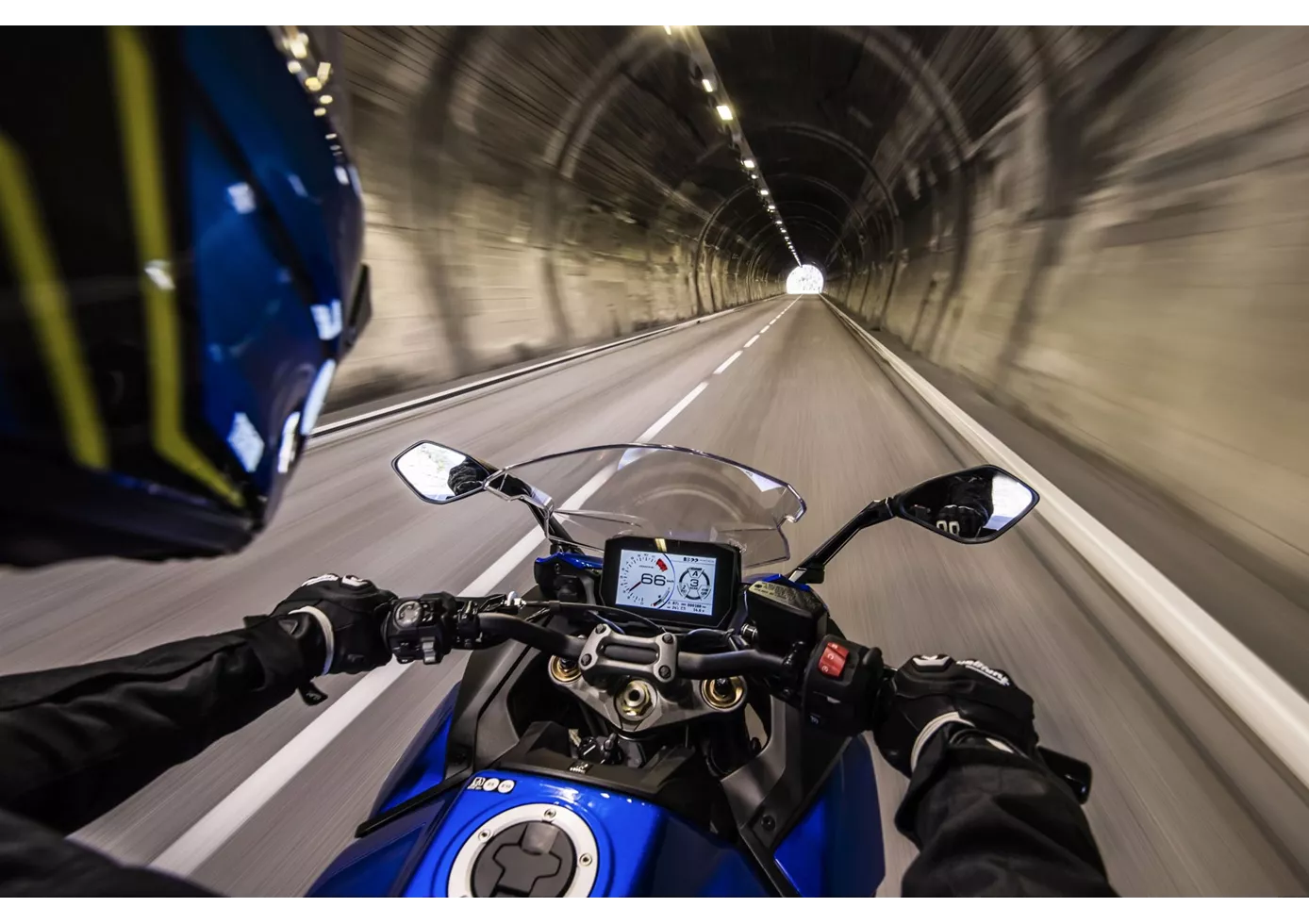
The Grand Touring variant of the GSX-S combines the super-sporty genes of the model series with an astonishing amount of touring potential. The top chassis and the bombastic engine guarantee riding fun. At the same time, the ergonomics are versatile enough to allow for relaxed stages. As a true sport tourer, the Suzuki takes both sport and touring seriously and manages this compromise extremely well. Only the gear ratio could be a little shorter for country road use and technocrats might miss lean angle-dependent systems. Apart from that, however, the GSX-S GT offers lush equipment and a well-rounded overall package.
Suzuki SV 650 2017

The Suzuki SV 650 is accompanied by a long history of success that is sure to continue for a long time. Its supple V2 impresses with very smooth response and plenty of torque. Compact dimensions help to make the motorbike look very compact. This will be very convenient for beginners. The chassis also scores with playful handling. Unfortunately, the braking effect is not at the level one would expect from such a powerful vehicle.
Price Comparison Avarage Market Price Suzuki GSX-S1000GT vs Suzuki SV 650
There are a few key differences between a Suzuki GSX-S1000GT 2022 and a Suzuki SV 650 2017. In terms of price, the actual average price of a Suzuki GSX-S1000GT 2022 is about 109% higher. Compared to Suzuki SV 650 2017 there are more Suzuki GSX-S1000GT 2022 bikes available on the 1000PS.de Marketplace, specifically 46 compared to 6. It takes less time to sell a Suzuki SV 650 with 112 days compared to 136 days for the Suzuki GSX-S1000GT. Since model year 2022 1000PS.de editors have written 13 reviews for the Suzuki GSX-S1000GT and 25 reviews for the Suzuki SV 650 since model year 2005. The first review for the Suzuki GSX-S1000GT was published on 22/09/2021 and now has more than 76,300 views. This compares to more than 14,200 views for the first review on Suzuki SV 650 published on 26/09/2008.
